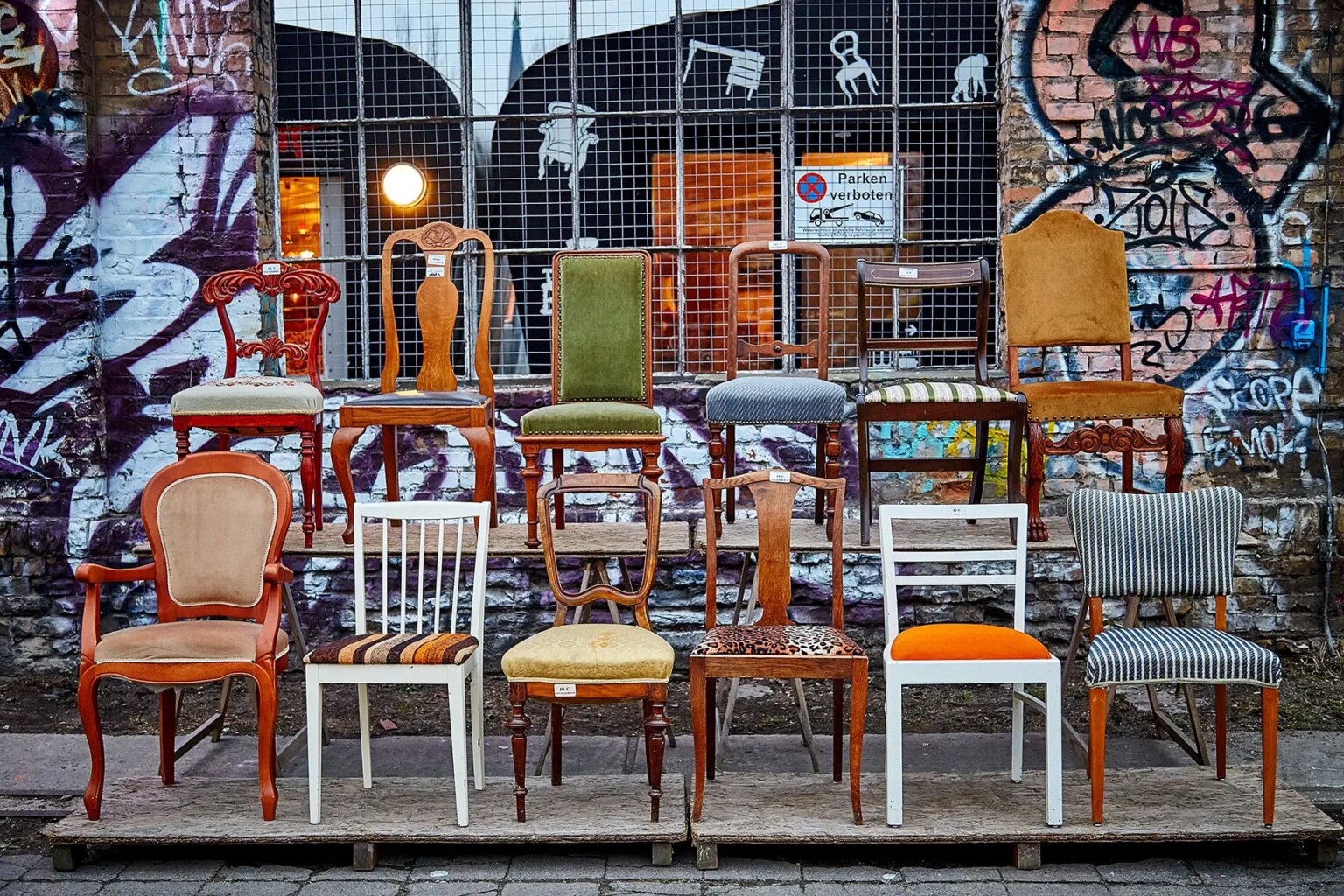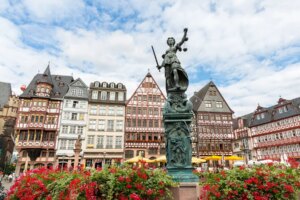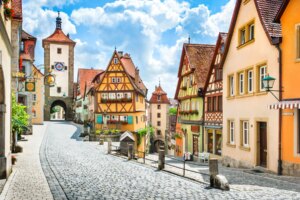To summarise antique shopping and flea market opportunities in a country as large and diverse as Germany is as difficult as shoving a fully masted ship into the mouth of bottle. I won’t attempt to give a comprehensive list but instead strive to offer a few of my favorite shopping locales in this best of the best Antiques Diva — Germany Overview.
The reasons for the wealth of treasures available in Germany go well beyond the size of the nation. As explained by Judith Miller, author of the Miller’s Antiques Price Guides series, before Germany was one nation, the German states engaged in a natural rivalry for wealth and power that went hand in white-gloved hand with an urge to outdo their neighbors.
“In their pursuit of excellence, individual nation states specialized in furniture, glass-making, art, and architecture, producing designs and workmanship of the very highest standards,” said Miller. “As a result, the whole region shares a legacy of impressively endowed castles and palaces, each embodying a succession of style development that influenced the whole of Europe at different eras – from Neoclassicism in Berlin and Baroque in Bavaria to Jundstil (art nouveau) in Vienna.”
Needless to say, Germany to this day houses a wealth of treasures and a visit through the German countryside is a bit like taking bites of apple strudel – each bite tastier than the last. Wandering flea marketing in Germany is like being kid in a candy store: The sheer assortment of antiques, vintage, and second-hand home decor on offer is overwhelming, both in variety and the scope of the collections.
The reunification of East and West Germany has changed the antique landscape as increasingly more treasures are being released into circulation and almost two decades after the wall has fallen Miller calls Germany, “The New France.”
Groupon
Want to explore all the exciting things Germany has to offer but on a tight budget? Don't worry, Groupon is here to save the day! There are hundreds of incredible deals and discounts to be found on the website, including reduced prices on hotels rooms, tickets to popular tourist attractions, and more throughout the country. So go ahead and treat yourself!
Berlin
My first encounter with Berlin’s flea markets has me changing my nom de plume from the Antiques Diva™ to the Flea market Frau! The Berliner Trodelmarkt, near the Tiergarten S-bahn station, meets weekends from 10 a.m. to 5 p.m. on Strasse des 17 Juni. The last time I visited this bargain shopping enclave (which is considered to be the highest priced flea market in town) I was with my husband and nephew,16. The entire family returned from the flohmarket with purchases in tow. I came home with a barely used classic vintage Burberry trench for just over a 100 euros and a serving set of Prussian plates for 55 euros while my husband scouted out cufflinks commemorating the 1936 Berlin Olympics (a true collector’s item for which he paid 40 euros for but received three other pairs free). Meanwhile, my nephew stocked up on East German nostalgia, Russian-style army hats and communist party flags.
More of this type of retro memorabilia is available on Saturdays and Sundays at the Kunst und Nostalgie Markt on Museum Island and at the Zille-Hof (Fasanenstrasse 14). For a little less of the ‘fleas’ at the flea market, visit the Berliner Antik und Flohmarkt at Friederichstrasse/Georgenstrasses where the vendors carry everything from bric-a-brac to one-of-a-kind lamps. Or better still, head for the Suarezstrasse where you’ll find 30 antique shops selling furniture, artwork, ornaments and jewellery.
Frankfurt area
Having friends living near Frankfurt means that we call into this area frequently which given the antique shopping in the area, isn’t a great sacrifice! The Saturday flea market along Schaumainkai, on the south bank of the Main River, holds a degree of interest as do the usual offerings of home décor stores and craft shops on the Bergerstrasse. Should upscale antique shops be more your cup of tea, you’ll find them clustered on the streets around the Kaiserdom: Braubachstrasse, Fahrgasse and Weckmarkt.
Heidelberg
Should the countryside call your name and you’re ready to get out of the shadow of Main-hatten, then Heidelberg has oodles of antique shops. The side streets in the old town such as Untere Strasse or in the area around Heiliggeistkirche offer an eclectic mix of old and new: antiques and avant-garde fashion, Art Nouveau jewellery and old porcelain. But Heidelberg is a tourist destination and every foreigner living in the area has walked in white tennis shoes into its streets before you, thus you’ll find items priced accordingly.
Odenwald district
When I want to get away, I go south of Frankfurt to wander the Odenwald district from Schlierbach to Michelstadt and Erbach. A drive from village to village finds me stumbling upon one antique shop after another and the stumbling only gets worse after I indulge in a long, heavy wine-accompanied German lunch with my designated driver! But be aware of more than the temptation to over-indulge your senses, this is a region where the dialect is thick and your high school German won’t get you far. You will quickly realise Toto that you’re not in Kansas anymore.
Each time I visit I wish the Germans spoke sign language as well as the Italians! Remember my trusty tip for unfortunate monoglot fellows – “Always carry a pen and pad of paper to have vendors write prices and for you to mark your counter offer.”
Nurnberg
Another German jewel is Nurnberg, girdled in medieval splendor by three miles of original city walls. While its fame is for the Christmas market held each November and December, the Antique & Art Nurnberg held each October is nothing to sneeze at. It is one of the premier art showcases around the world for up-and-coming artists and prides itself on enabling younger, smaller galleries to take part. If the fair’s not in town and you’ve still an itch to scratch for antique shops, head to the narrow street of Bergstrasse and around the nearby Church of St. Seebald, off the Albrecht-Dürer Platz. If your German is good enough to decipher euro amounts when spoken to, then Nurnberg’s auction houses are the place for you to make a deal! Hümmer Auktionen at Füll 4 has an excellent reputation as does Auktionshaus Schlosser which has recently relocated to in the old city of Bamberg in the “Bibra-Palais.” Located at Karolinenstraße 11, the auction house holds four auctions per year with the main focus on old master paintings and modern prints, porcelain, furniture, and high-quality decorative arts.
Bamberg
The world heritage city Bamberg is an outstanding cultural and architectural highlight and the center of art trade in northern Bavaria, my favorite region in Germany. While here you must certainly stop for a bite to eat — the bakeries in town supply gourmet food stores such as Dallmayer in Munich and KaDeWe in Berlin. Bamberg has the greatest concentration of antiques in Germany and in the old quarter alone, you’ll find at least 30 antique boutiques. Each shop, if sketched and framed would look from the outside as if they were the model for a late 18th-century engraving of one of the little German towns time forgot.




